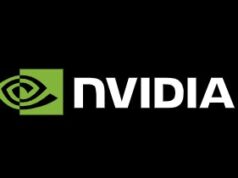Despite the lure of gaming consoles and palm-held devices, gaming PCs are still maintaining the grip in the market despite strong competition. Among top gaming PC brands, Dell’s Alienware is noted for its sizable market penetration with unique aesthetics and performance.
The Aurora R9 is noted for the compact design and Intel i7 9700K processor delivering quality frame rates plus the AIO cooling system keeping the interiors at the right temperature.

The analysis of the market points to some top reasons for the growth of gaming PCs despite competition. They include the following elements.
• Affordability
• Quest for faster frame rates and high resolution
• Best experience from “form factor”
• Flexibility for customization and upgrade
• Technology boost from chipmakers
The market of gaming desktops
Branded gaming PCs segment grew 4 percent in 2018 over the previous year while laptops/notebooks showed a higher growth rate. IDC data also says global shipments of gaming desktop and notebook PCs hit 10 million units in the third quarter of 2019 showing a 10 percent increase over the previous year. Gaming PCs will have bigger consumer demand because of faster frame rates and higher resolutions. IDC expects the gaming monitor market will grow 11.8 percent in 2023.
The growth of gaming PCs and monitors is also backed by many external factors such as AMD’s new GPUs and CPUs mainly at the upper-end and boosted competition across price points, noted Jitesh Ubrani, the IDC official.
In IDC’s parlance, gaming PCs as desktops or notebooks must have a premium or performance grade GPU (graphics processing unit) from Nvidia and AMD for being classified as gaming PCs. However, professional-grade GPUs such as the Quadro or Radeon Pro are kept out of the gaming PC purview by IDC, and gaming monitors ought to have a refresh rate of 100 Hz or higher.
Amazon initiative
Online retail giant Amazon also encouraged the gaming PC market with its scheme to support the purchase of gaming PCs and PC components under a monthly payment plan without pinching the buyer.

The categories supported were desktops, laptops, monitors, tablets, components, storage, networking, drives, memory, and computer accessories. The scheme has a zero percent interest financing. The growth of the gaming PC market is also aided by a cost-efficient sub-segment.
The gaming PC build market offers a professional assembling of gaming desktops on modest budgets by putting together graphics card, processor, motherboard, fan splitter, memory, power supply, hard drive, and the required peripherals. The informal market is also aiding customers to upgrade desktops into gaming PCs cost-effectively.
Bullish outlook
The IDC sees the market for gaming desktops having a plateau until 2023 as major markets of China and Western Europe moving to game notebooks.
But, IDC expects a leap after three years on as premium gaming desktops will remain viable markets as the best experience will continue to come from the form factor.
However, the growth of gaming notebooks will exceed that of desktops at 7.5 percent as the gaming audience migrates to mobile platforms and thin gaming notebooks.











